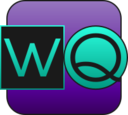Introduction
Introduction

wq is a software framework designed to facilitate the development of robust, offline-capable mobile / web apps. The original use case for wq is mobile data collection, whether by professional environmental monitoring staff or by volunteers in e.g. citizen science and mobile crowdsourcing projects. However, wq is also useful as a platform for building a variety of mobile-first websites and CRUD applications.
The goal of wq is to make it easy to rapidly assemble a complete data collection and management platform, while ensuring enough flexibility to adapt to project-specific data models and workflows. While wq is not quite a point-and-click "form-builder" solution, it does provide a number of default templates and utilities to make it easy to get started quickly and customize later. Moreover, wq has already been used to create point-and-click form builder solutions for specific domains.
From an implementation standpoint, wq is comprised of five modules:
- wq.start provides project scaffolding tools and templates that help with the initial generation of a new wq-powered project.
- wq.app provides the basis of the client application, through a collection of JavaScript modules and a provided build process.
- wq.db provides a REST API and server-side rendering of application screens for fast initial loading.
- wq.io is a standalone Python library for dealing specifically with data import and export.
- wq.core provides the
wqcommand-line interface used by the other modules.
Like any software framework, the design of wq incorporates a number of core principles and assumptions. The documentation includes an API Conventions chapter proposing interoperable solutions for addressing common infrastructure concerns. We hope that this generalized approach will give individual projects the flexibility to replace parts of the wq stack with alternatives built with other platforms and programming languages.
Documentation Outline
The documentation is structured to lay the foundation and conventions before getting into the implementation details. The chapters are as follows:
- Getting Started
- Philosophy
- API Conventions
- Module Documentation
- wq.app
- wq.db
- wq.io
Last modified on 2019-10-25 11:48 AM
Edit this Page |
Suggest Improvement
© 2013-2019 by S. Andrew Sheppard